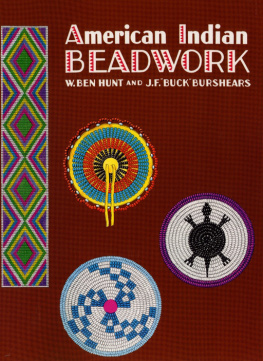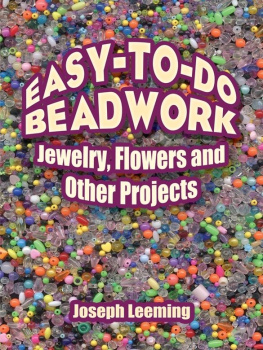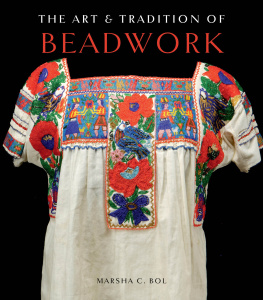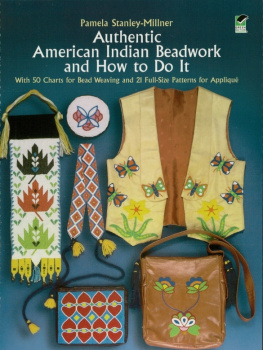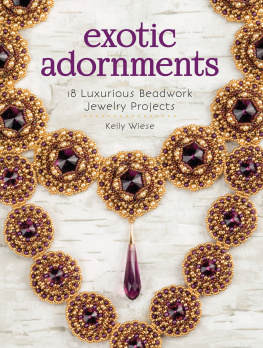We hope you enjoyed reading this Touchstone eBook.
Join our mailing list and get updates on new releases, deals, bonus content and other great books from Touchstone and Simon & Schuster.
C LICK H ERE T O S IGN U P
or visit us online to sign up at
eBookNews.SimonandSchuster.com
Thank you for downloading this Touchstone eBook.
Join our mailing list and get updates on new releases, deals, bonus content and other great books from Touchstone and Simon & Schuster.
C LICK H ERE T O S IGN U P
or visit us online to sign up at
eBookNews.SimonandSchuster.com

Buck Burshears
J. F. Buck Burshears, a longtime Boy Scout leader, formed within the Scouts a unique group known as the Koshare Indian Dancers. The boys interpreted native dances, made costumes, and studied the history and lives of various tribes. During his travels with the Koshares, Mr. Burshears amassed one of the most extensive collections of Indian artifacts and handicrafts in the country.

Ben Hunt
W. Ben Hunt traveled widely, visiting pueblos and hogans of the Southwest and reservations of the Midwest and Canada to acquaint himself with Indian lore. While he was living and camping with the Indians, they gave him the name Tasunka Witko, which means Crazy Horse. He was also known as Kachina Ben because of the Kachina Indian dolls he was so adept at carving. In addition to being a well-known Boy Scout leader and adviser, Mr. Hunt was a writer who regularly contributed to professional and scouting magazine articles on Indian and other handicraft projects.
Fireside
Rockefeller Center
1230 Avenue of the Americas
New York, N.Y. 10020
www.SimonandSchuster.com
Copyright 1951 by W. Ben Hunt and J. F. Burshears
All rights reserved, including the right of reproduction in whole or in part in any form.
F IRESIDE and colophon are registered trademarks of Simon & Schuster Inc.
First Fireside Edition 1996
First Collier Books Edition 1971
ISBN: 0-684-82944-4
ISBN-13: 978-1-4767-8317-8 (eBook)
FOREWORD
I want to make an Indian beaded belt! a young boy demanded of his handicraft instructor in camp. Such demands are made every day in thousands of camps and craft-shops. To fulfill the many requests for craft instruction, especially on how to make a beaded belt and other beaded costumes of the American Indian, this book has been written.
The romance and beauty of the costumes of the American Indian have so endeared them to children and adults alike all over the world, that it is natural for every child to want to make something Indian. Often attempts are very feeble, for the uninitiated cannot grasp the method artistry of design, and his work usually ends up in a miserable failure, both in construction and design. A beginner often makes a few diamonds and triangles, and finishes by putting his initials on a few of the other symmetrical designs. If he does finish these first pieces in this manner, he is sure to realize very soon that it is not Indian.
This book has been published not as an exhaustive study of design and methods, but as a handicraft guide for those seeking the fundamentals of construction and ideas of design. Experienced students of Indian lore often create creditable designs, but not until they have made a complete study of it, for our Anglo minds seldom function like that of the Indian.
It is hoped that this book will be accepted as favorably as Ben Hunts other books on allied Indian crafts.
ACKNOWLEDGMENTS
To Delmar and Stanley Kimball, Koshare Chiefs, whose artistry and painstaking labor graphed the designs as they were collected by J. F. Burshears.
To Lester Griswold for his inspiration and loan of graphing cuts which were used for the designs.
To Ralph Hubbard, great teacher and authority, for inspiration directly and indirectly which started the Koshare Indian Dancers.
To Chester Denton for photographing the costume collection.
DEDICATION
This book is respectfully dedicated to the Koshare Indian Dancers, Boy Scouts of Troop 230, La Junta, Colorado.
Their enthusiasm and interest in their craft-work gave the authors the idea that a book such as this would be helpful to all those who wanted to learn and practice the beadwork arts of the American Indian.
CONTENTS
SECTION 1
SHORT HISTORY OF BEADWORK OF THE AMERICAN INDIAN
Beads of various types have been used for ornamentation by man since the beginning of time. These have taken many forms, such as seeds, shells, claws, bones, and stones.
The beads used by the American Indian at the time of Columbus discovery were no different than those of other primitive people. Belts, woven of wampum or shell, were common among many tribes who had access to shells. With the discovery of America and the coming of settlers, traders soon found their stocks of glass beads readily accepted as trade for furs. The fur traders prospered, and soon trading expeditions went deeper and deeper into the woods and plains country. Before the advent of the European seed bead, most plains and woodland Indians used porcupine quills dyed in various colors for decoration of their better clothes. With the coming of beads they replaced the quills or combined the beads with the quillwork. The geometrical designs to which quills lent themselves were the most generally followed. With the coming of the missionaries with their floral embroidered vestments, the Lake Indians and, more recently, others applied their beads to such flowered designs.
Many tribal characteristics of design are recognizable. The designs of the Lake Indians, for example, were more often flowered; those of the Sioux or plains Indian were geometrical, and the Blackfoot and northern plains Indian had more massive geometrical designs. Many tribes applied animal pictures to vests and bandoleers. For pure beauty of geometrical design, few, if any, excelled the Apache. Their close cousin, the Navajo, expressed similar artistry in rugs.
The following pages are made up of various designs collected from many parts of the United States. Many of them are from the private collection of J. F. Burshears, others come from the Smithsonian Institute, Washington, D. C., the Field Museum, Chicago, 111., and the Jefferson Memorial at St. Louis, Mo., and pieces collected by the Koshare Indian Dancers of La Junta, Colo. Many thousands of designs are available. These are relatively few, but they give a cross section of the arts of different tribes. Similar designs are found in many sections due to the fact that the Indians were great traders. It is common to find Indians thousands of miles away wearing a Chippewa breechcloth and belt of floral designs, or the Pueblos of New Mexico wearing beaded costumes of the northern tribes.
The Pueblos and Navajos did very little beadwork, and it has been only recently that Santa Clara squaws have been making belts, following geometrical designs. They may have learned this art in the schools or picked it up during their travels.
A beautiful bag, that came from a Two Gray Hills trading post on the Navajo Reservation, shows that the beadworker had applied the design of a fine Navajo rug. Some of the Utes have created purses and belts of realistic floral designs. The Lake Indians also have created some realistic floral designs, but many are only abstractions of floral designs.

